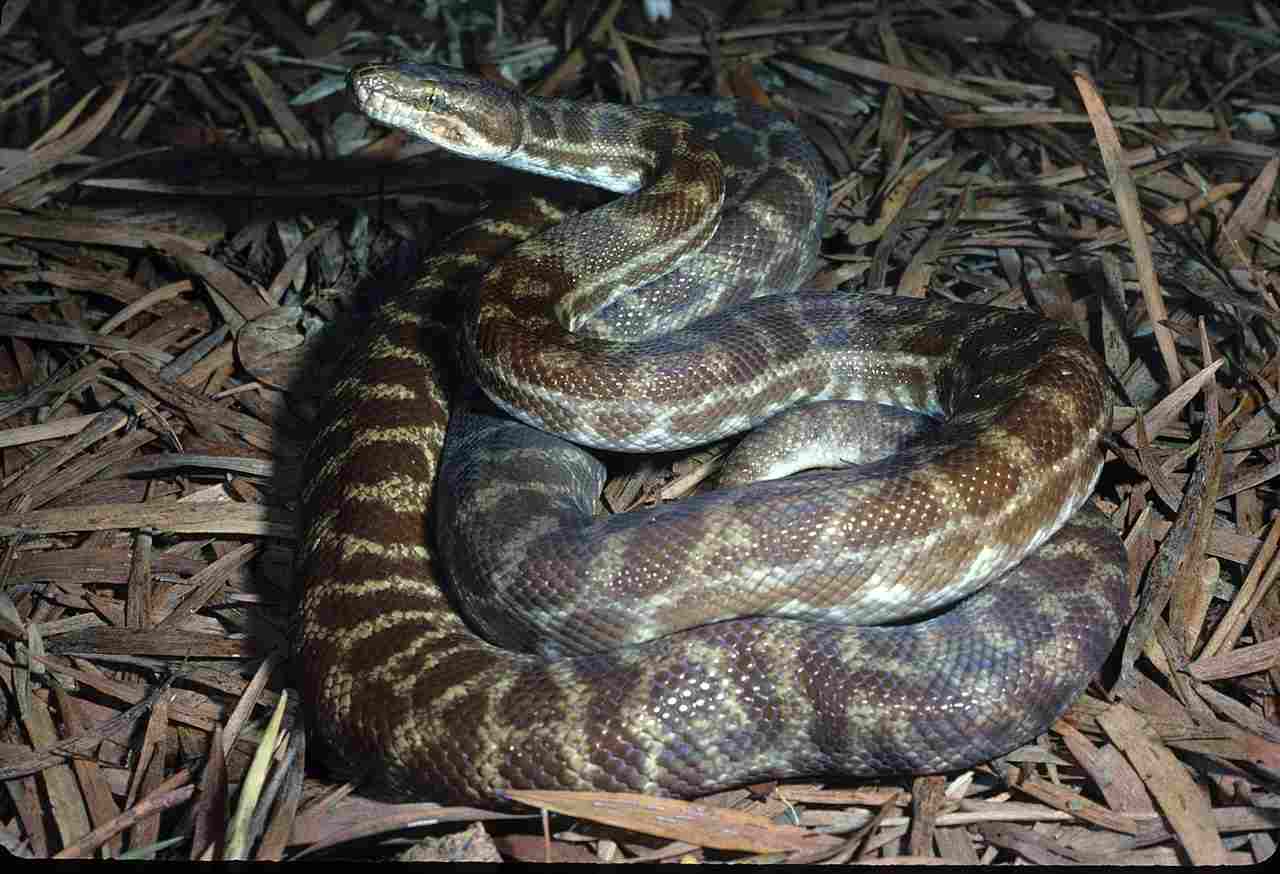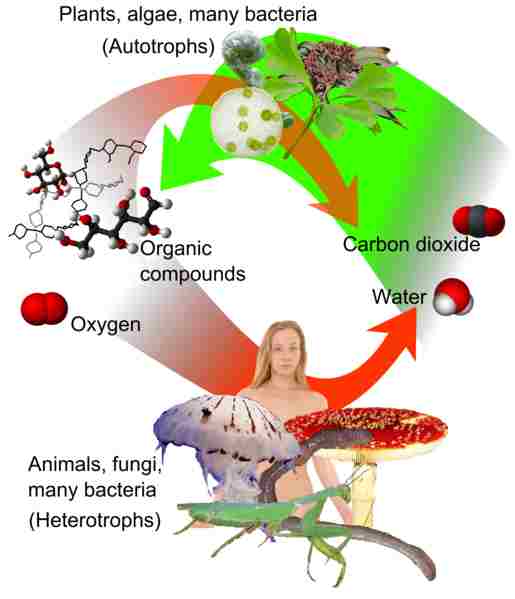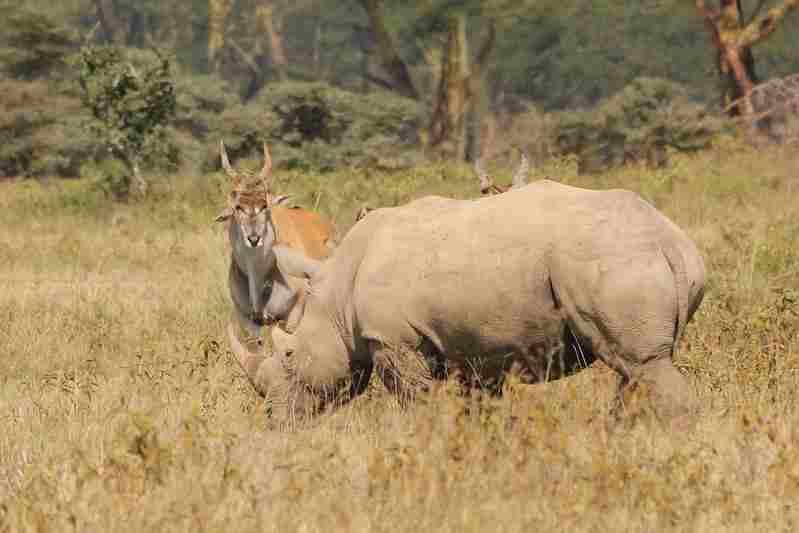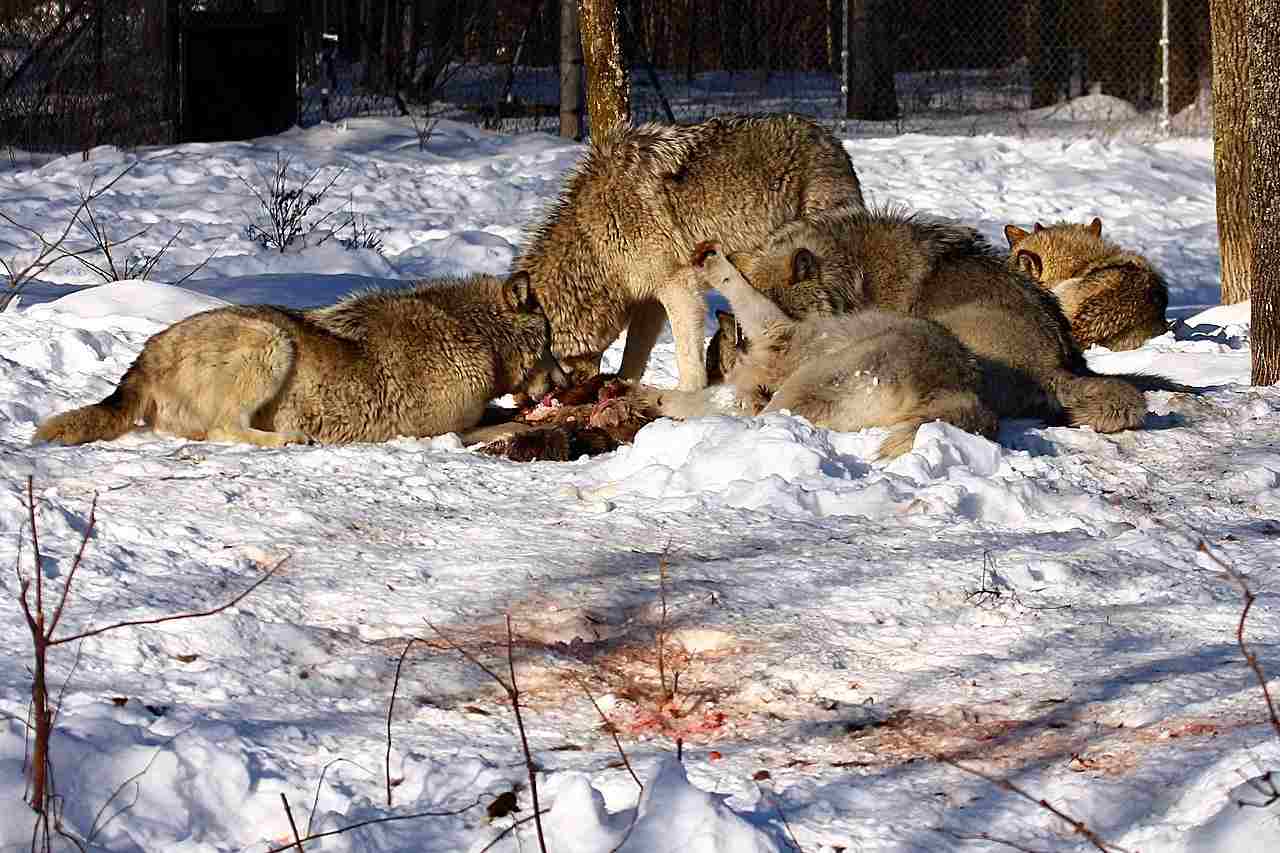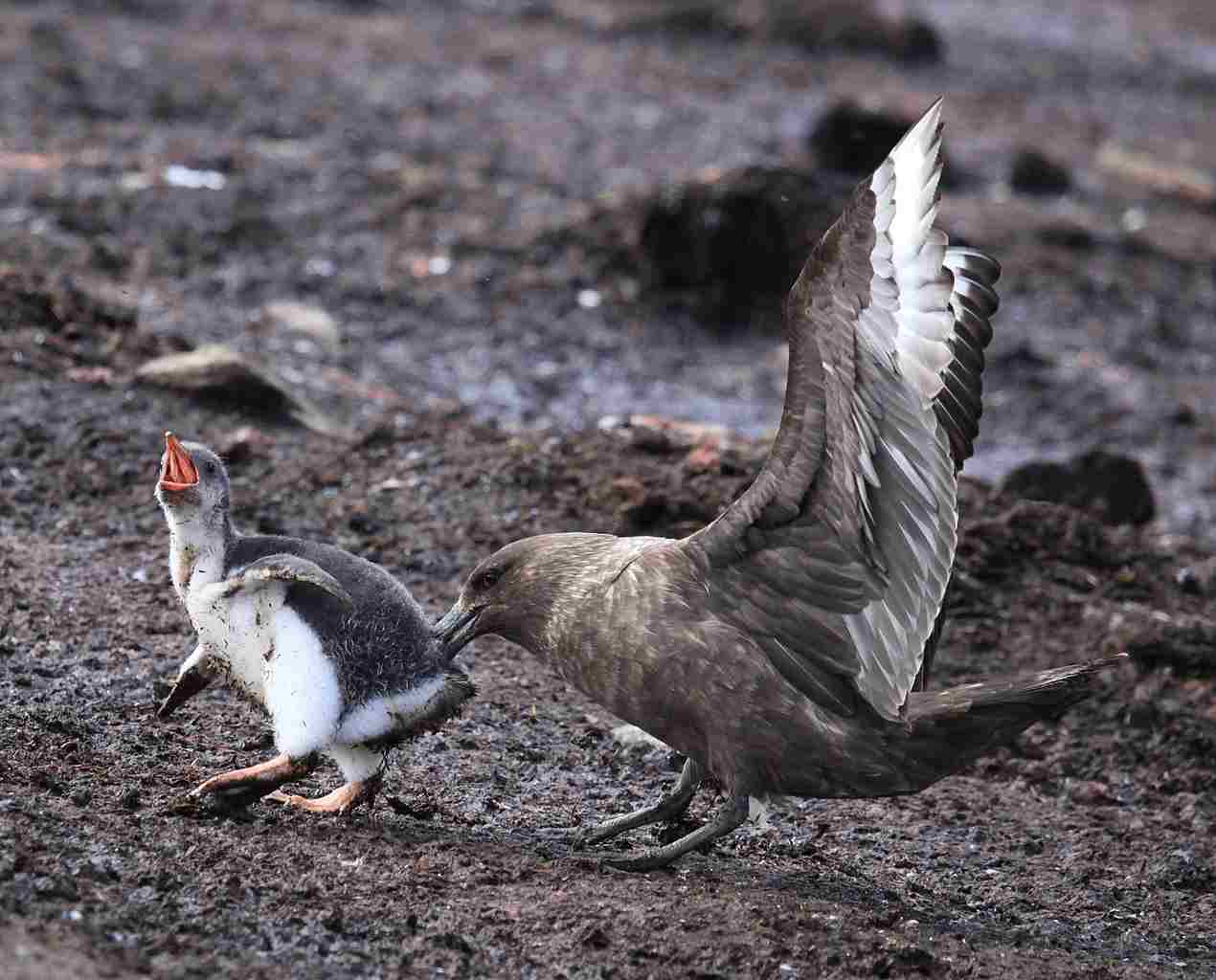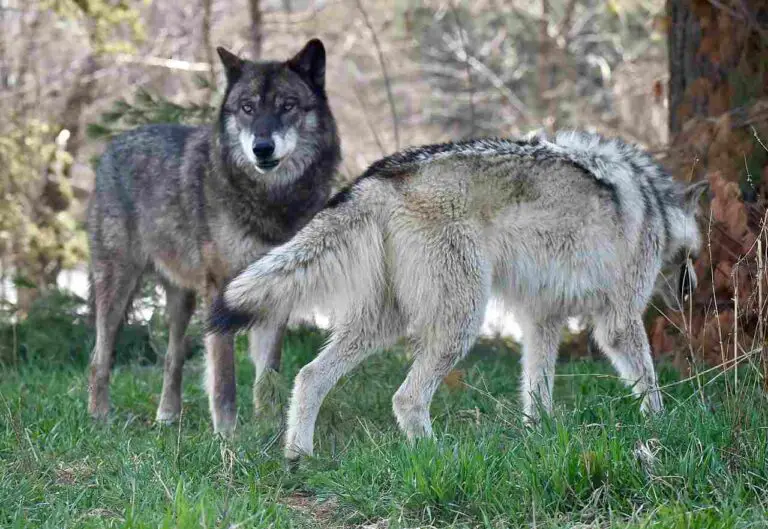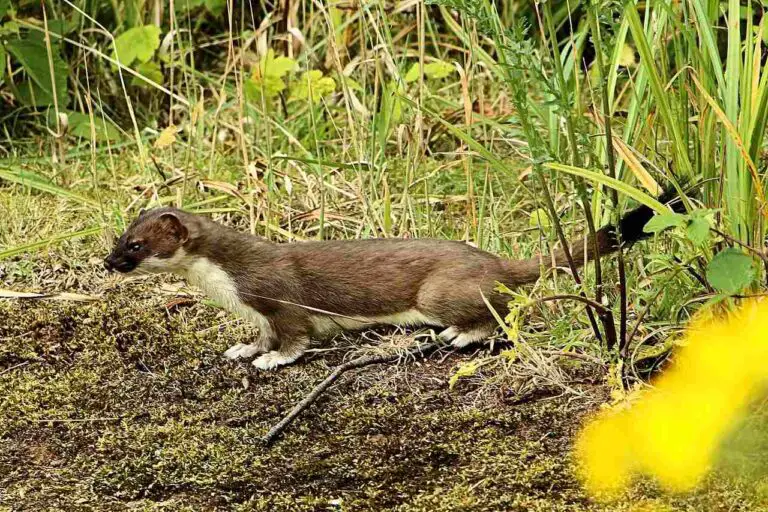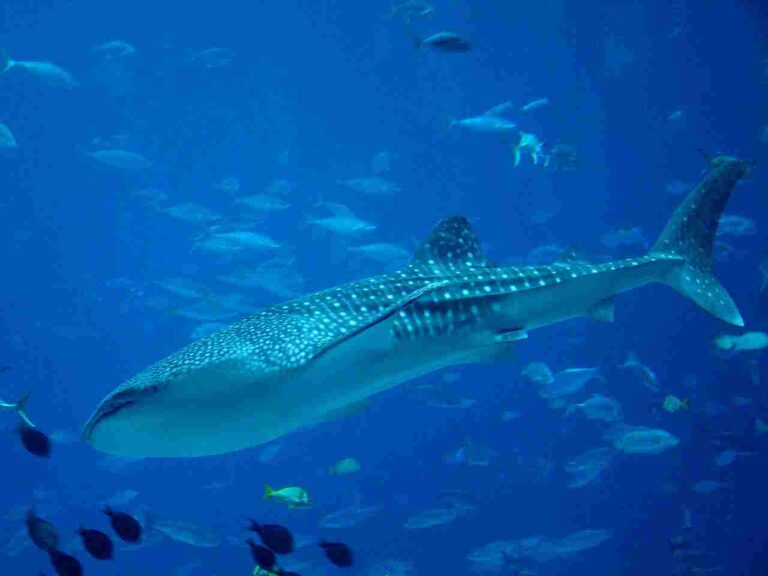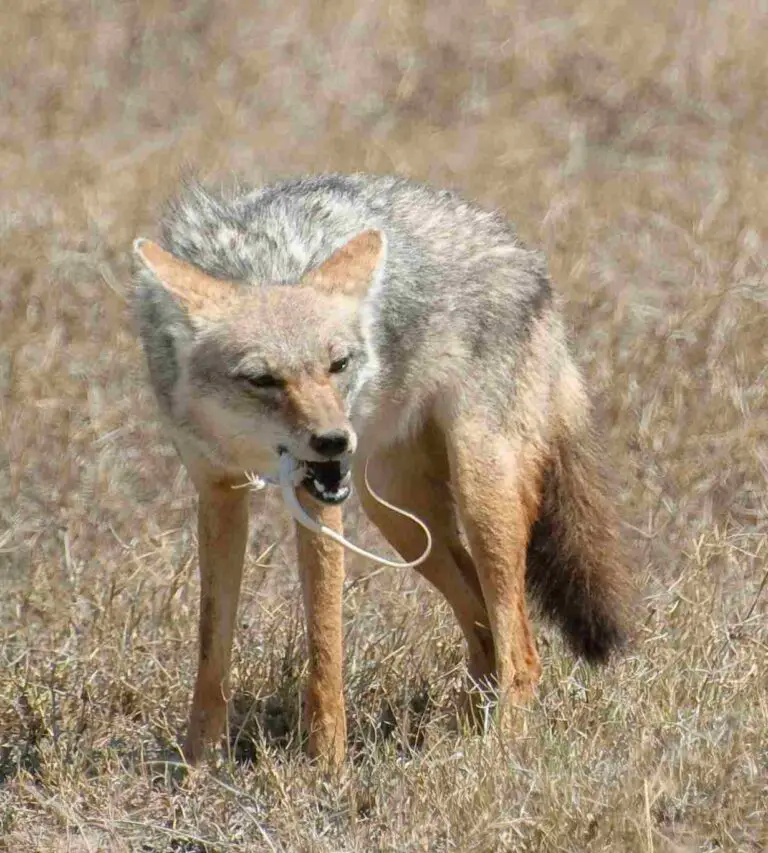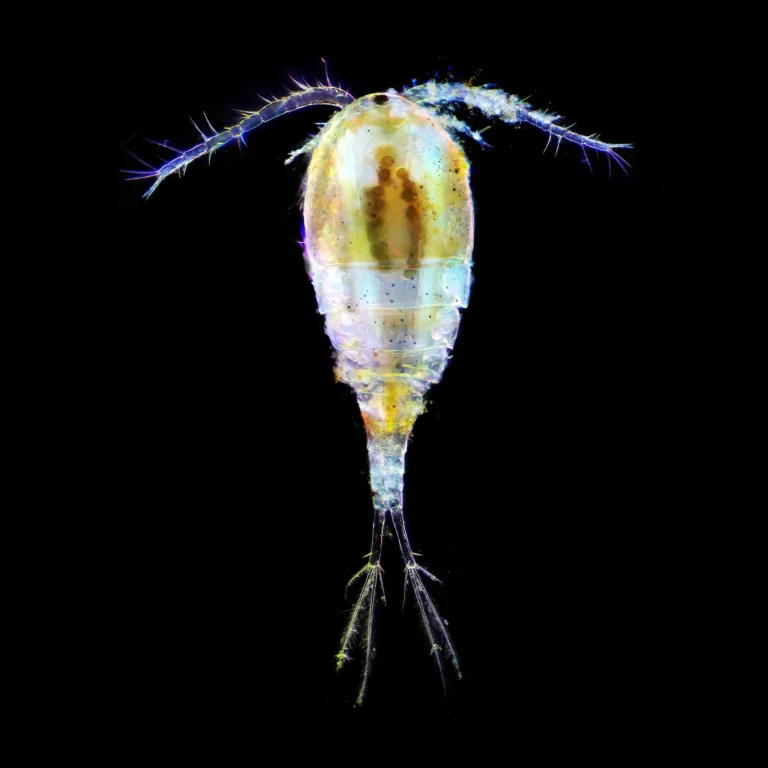Is a Wolf a Consumer? The Consumer Status and Role of Wolves Discussed
A wolf is a consumer because it survives by feeding on other organisms, including fellow consumers within its habitat, ecosystem or food chain.
Here, the consumer status and role of wolves are discussed.
Reasons Why a Wolf is a Consumer
1. Wolves Have No Chlorophyll Pigmentation
Wolves have no chlorophyll pigmentation, which is a key reason why they are considered consumers in the ecosystem. Chlorophyll is the pigment responsible for photosynthesis in plants, allowing them to convert sunlight into energy. However, wolves, being mammals, lack the ability to produce chlorophyll and therefore cannot manufacture their own food through photosynthesis.
As consumers, wolves rely on other organisms as their food sources. They are part of the carnivorous category, feeding primarily on herbivores such as deer, elk, and moose. By consuming these herbivores, wolves obtain the energy and nutrients they need to survive and thrive.
Without the ability to produce their own food, wolves must actively hunt and capture their prey. They possess a set of specialized adaptations, including sharp teeth and strong jaws, that enable them to effectively capture and consume their food. Their hunting strategies often involve working together in packs, allowing them to take down larger prey that would be difficult for a solitary wolf to overpower.
In addition to herbivores, wolves may also consume smaller animals such as rodents or birds when the opportunity arises. This flexibility in their diet allows them to adapt to different environments and food availability.
Being consumers, wolves play a crucial role in maintaining the balance of ecosystems. By preying on herbivores, they help control their populations, preventing overgrazing and promoting the health of plant communities. This, in turn, has cascading effects on other organisms within the ecosystem.
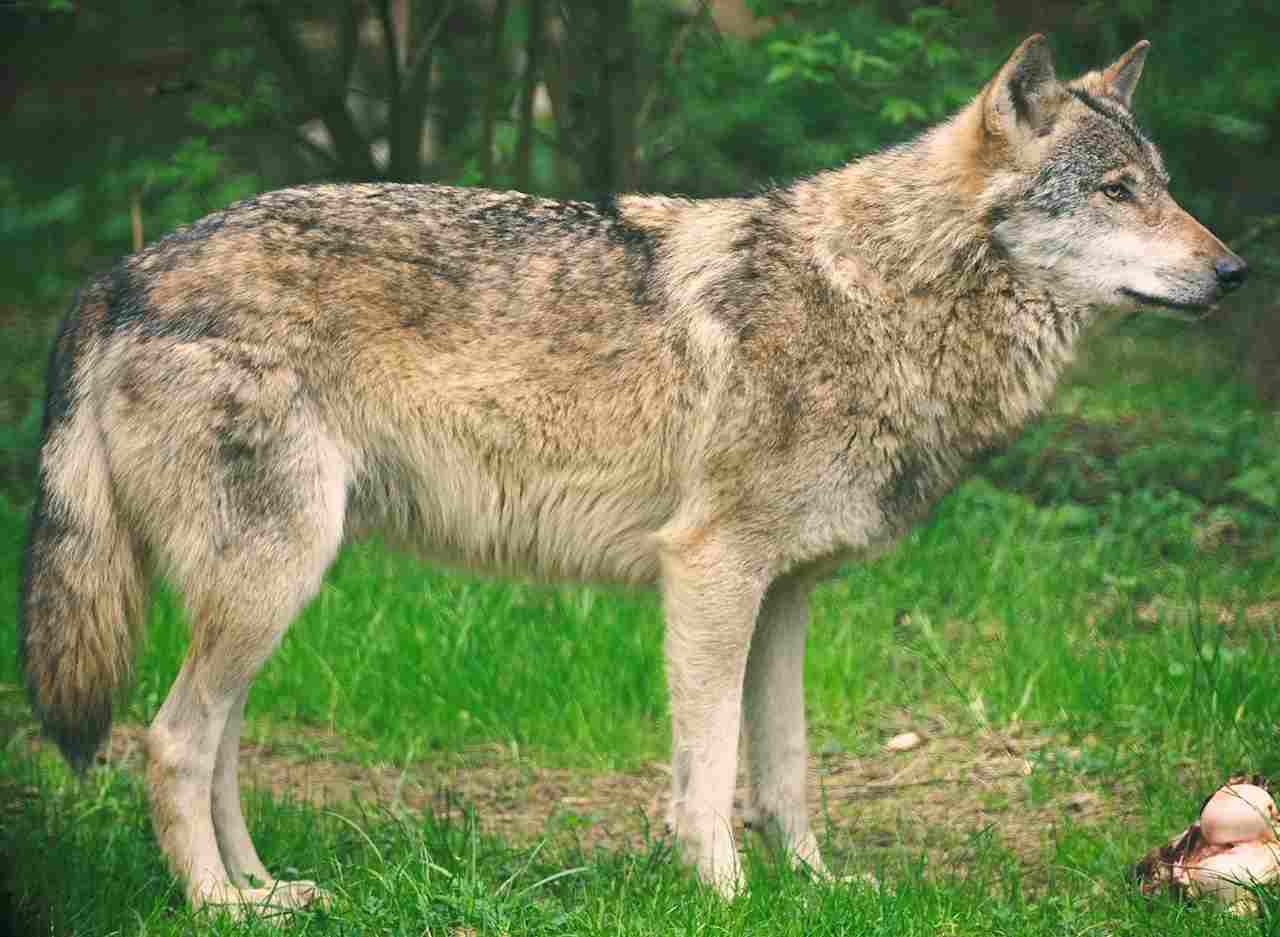
2. They are Incapable of Manufacturing Their Own Food
Wolves are considered consumers because they are incapable of manufacturing their own food. This inability to produce their own food is a fundamental characteristic that distinguishes them from producers in the ecosystem. Unlike plants, which have chlorophyll pigmentation and can convert sunlight into energy through photosynthesis, wolves lack this pigment and cannot synthesize their own nutrients.
As consumers, wolves rely on other organisms as their food sources. They are part of the carnivorous category, feeding primarily on herbivores such as deer, elk, and moose. By consuming these herbivores, wolves obtain the energy and nutrients they need to survive and thrive. This reliance on external food sources is a key aspect of their consumer status.
Without the ability to produce their own food, wolves must actively hunt and capture their prey. They possess a set of specialized adaptations, including sharp teeth and strong jaws, that enable them to effectively capture and consume their food. Their hunting strategies often involve working together in packs, allowing them to take down larger prey that would be difficult for a solitary wolf to overpower.
In addition to herbivores, wolves may also consume smaller animals such as rodents or birds when the opportunity arises. This flexibility in their diet allows them to adapt to different environments and food availability. However, their primary reliance on herbivores as a food source remains consistent.
Being consumers, wolves play a crucial role in maintaining the balance of ecosystems. By preying on herbivores, they help control their populations, preventing overgrazing and promoting the health of plant communities. This, in turn, has cascading effects on other organisms within the ecosystem. Wolves act as a regulatory force, ensuring that herbivore populations do not exceed the carrying capacity of their environment.
3. Other Organisms are Food Sources for Wolves
Wolves are consumers because they rely on other organisms as their food sources. This fundamental characteristic sets them apart from producers in the ecosystem. As carnivores, wolves primarily feed on herbivores such as deer, elk, and moose. By consuming these herbivores, wolves obtain the energy and nutrients they need to survive and thrive.
The diet of wolves consists mainly of large herbivores, which they actively hunt and capture. Their specialized adaptations, including sharp teeth and strong jaws, enable them to effectively capture and consume their prey. Wolves often employ cooperative hunting strategies, working together in packs to take down larger prey that would be challenging for a solitary wolf to overpower.
While herbivores form the primary food source for wolves, they also have the flexibility to consume smaller animals such as rodents or birds when the opportunity arises. This adaptability in their diet allows them to survive in different environments and adapt to varying food availability.
The reliance of wolves on other organisms as their food sources is a key aspect of their consumer status. They play a crucial role in maintaining the balance of ecosystems by preying on herbivores. Through predation, wolves help control herbivore populations, preventing overgrazing and promoting the health of plant communities. This, in turn, has cascading effects on other organisms within the ecosystem.
By regulating herbivore populations, wolves ensure that these populations do not exceed the carrying capacity of their environment. This helps to maintain a sustainable balance between herbivores and their food sources, preventing ecological imbalances and promoting the overall vitality and stability of the ecosystem.
4. Wolves Lack Typical Producer Features and Structures
Wolves lack typical producer features and structures, such as roots and leaves, which further solidifies their status as consumers in the ecosystem. Unlike plants, which have chlorophyll pigmentation and can produce their own food through photosynthesis, wolves are unable to manufacture their own nutrients. Instead, they rely entirely on consuming other organisms for their energy and sustenance.
One of the key distinctions between producers and consumers is the ability to convert sunlight into usable energy. While plants can harness the sun’s energy through photosynthesis, wolves do not possess this capability. Instead, they must actively seek out and capture prey to obtain the nutrients they need to survive.
Furthermore, wolves lack the specialized structures and adaptations that are characteristic of producers. Plants have roots that anchor them in the ground and absorb water and nutrients from the soil. They also have leaves that capture sunlight and facilitate the process of photosynthesis. In contrast, wolves have evolved to be efficient predators, with sharp teeth and strong jaws that enable them to capture and consume their prey.
The absence of these typical producer features and structures further emphasizes the consumer role of wolves in the ecosystem. They are dependent on other organisms for their survival and must actively hunt and consume prey to meet their nutritional needs. This reliance on external food sources distinguishes them from producers, which can generate their own energy through photosynthesis.
5. They are Neither Saprophytic Nor Detritivorous
Wolves cannot be classified as decomposers, which is another reason why they are considered consumers in the ecosystem. Decomposers, such as fungi and bacteria, play a crucial role in breaking down dead organic matter and recycling nutrients back into the environment. However, wolves do not possess the necessary adaptations or behaviors to fulfill this role.
Unlike decomposers, wolves primarily feed on living organisms. They are apex predators, meaning they occupy the top of the food chain and primarily consume herbivores or other carnivores. Their diet consists mainly of ungulates, such as deer and elk, which they actively hunt and kill. This predatory behavior sets them apart from decomposers, which obtain their nutrients from decaying organic matter.
Furthermore, wolves lack the specialized digestive systems that decomposers possess. Decomposers have enzymes and microorganisms in their digestive tracts that allow them to break down complex organic compounds, such as cellulose, into simpler forms that can be absorbed and utilized. Wolves, on the other hand, have a digestive system adapted for processing and extracting nutrients from fresh meat.
By consuming other organisms, wolves obtain the energy and nutrients they need for survival. They play a vital role in regulating prey populations and maintaining the balance of ecosystems. While decomposers are essential for nutrient cycling and decomposition, wolves contribute to the energy flow and trophic dynamics of the ecosystem as consumers.
Generally, wolves are neither saprophytic nor detritivorous, as they do not feed on dead organic matter or fulfill the role of decomposers. Instead, they are consumers that rely on hunting and consuming other organisms for their energy and sustenance. Their predatory behavior and diet of live prey distinguish them from decomposers and further solidify their status as consumers in the ecosystem.
What Type of Consumer is a Wolf?
What type of consumer is a wolf? Wolves are typically classified as high-level consumers, specifically tertiary or quaternary consumers. This categorization is based on several factors, including their size, predatory behavior, and the trophic cascading effect they have on ecosystems.
Firstly, wolves are larger than most secondary consumers in their habitat. Their size allows them to prey on a wide range of organisms, including herbivores and other carnivores. As apex predators, they occupy the top of the food chain and play a crucial role in regulating prey populations.
Secondly, wolves have no natural predators. This lack of predation allows them to exert significant control over their prey populations, further solidifying their status as high-level consumers. Without the presence of larger and more dominant predators, wolves can have a substantial impact on the trophic dynamics of an ecosystem.
Lastly, wolves contribute to trophic cascades within their ecosystems. A trophic cascade occurs when changes in the abundance or behavior of one species at a higher trophic level have cascading effects on the abundance and behavior of species at lower trophic levels. Wolves, as top predators, can influence the behavior and distribution of their prey, which in turn affects the abundance and behavior of the prey’s food sources.
Are Wolves Secondary Consumers?
While wolves are typically classified as high-level consumers, specifically tertiary or quaternary consumers, there are certain conditions under which they may be considered as secondary consumers. This classification would depend on the presence and activity of larger and more dominant predators in their habitat, such as bears and Siberian tigers.
In ecosystems where these larger predators are abundant and actively prey on wolves, they can be classified as secondary consumers. However, it is important to note that this would only occur in the absence of alternative food sources for the larger predators. Wolves would become a secondary food choice for these predators when their preferred prey is scarce.
Nevertheless, it is worth mentioning that wolves rarely fit into the secondary consumer category. As apex predators themselves, they primarily occupy the top of the food chain and play a crucial role in regulating prey populations. Their size, predatory behavior, and trophic cascading effects make them more commonly classified as tertiary or quaternary consumers.
The classification of wolves as secondary consumers is a rare occurrence and highly dependent on specific ecological conditions. In most cases and ecosystems where wolves are found, they are considered tertiary consumers due to their larger size, lack of natural predators, and significant impact on trophic dynamics.
Are Wolves Tertiary Consumers?
Yes, in most cases and ecosystems where wolves are found, they are considered tertiary consumers. This classification is based on several factors that highlight their role as top-level predators and their significant impact on trophic dynamics.
One key reason why wolves are classified as tertiary consumers is their larger size compared to most secondary consumers in their habitat. Wolves are apex predators, meaning they occupy the top of the food chain. Their size and strength allow them to prey on a wide range of organisms, including herbivores and smaller carnivores. This size advantage gives them access to a broader range of prey options, further solidifying their position as tertiary consumers.
Another important factor is that wolves have no natural predators in their habitat. Unlike secondary consumers, which may be preyed upon by larger predators, wolves face minimal predation pressure. This lack of natural predators allows them to maintain their position as top-level consumers and exert control over prey populations.
Furthermore, wolves have a larger predatory impact or trophic footprint compared to secondary consumers. Their hunting behavior and social structure enable them to take down larger prey, such as deer or elk, which in turn affects the abundance and distribution of these prey species. This cascading effect on lower trophic levels demonstrates their role as tertiary consumers and their ability to shape ecosystem dynamics.
It is important to note that while wolves can occasionally be classified as secondary consumers, this is a rare occurrence and highly dependent on specific ecological conditions. In ecosystems where larger and more dominant predators, such as bears and Siberian tigers, are present and actively prey on wolves, they may be considered secondary consumers. However, this would only happen in the absence of alternative food sources for the larger predators.
Reasons Why Wolves are Tertiary Consumers
1. They are Larger than Most Secondary Consumers in Their Habitat
Wolves are larger than most secondary consumers in their habitat, such as foxes, raccoons, and coyotes. This size advantage is one of the reasons why wolves are considered tertiary consumers.
Being larger than other secondary consumers gives wolves an advantage when it comes to hunting and capturing prey. Their size allows them to take down larger animals, such as deer and elk, which are not typically preyed upon by smaller secondary consumers. This ability to hunt and consume larger prey sets wolves apart and places them in the tertiary consumer category.
By preying on larger animals, wolves play a crucial role in regulating the population of their prey species. They help to control the numbers of herbivores in their ecosystem, preventing overgrazing and maintaining a balanced ecosystem. This predatory impact or trophic footprint is another reason why wolves are considered tertiary consumers.
In addition to their size advantage, wolves also possess other adaptations that make them efficient predators. They have sharp teeth and strong jaws that allow them to tear through the flesh of their prey. Their powerful legs enable them to chase down and capture fast-moving prey. These physical adaptations, combined with their intelligence and social behavior, make wolves highly effective hunters.
It is important to note that while wolves are primarily tertiary consumers, they can also consume secondary consumers when the opportunity arises. For example, if the population of their primary prey species is low, wolves may resort to hunting smaller mammals like rabbits or rodents. However, their preference for larger prey and their ability to take down such prey sets them apart as apex predators in their ecosystem.
2. Wolves Have No Natural Predators
Wolves have no natural predators, which is a significant factor in their classification as tertiary consumers. Unlike many other animals, wolves are not typically hunted or preyed upon by any other species in their ecosystem. This lack of natural predators allows wolves to occupy the top of the food chain and reinforces their role as apex predators.
The absence of natural predators gives wolves a distinct advantage in their environment. They are not limited by the threat of predation, allowing them to focus on hunting and consuming their prey. This freedom from predation pressure enables wolves to exert a greater predatory impact on their ecosystem, making them an essential component of the trophic structure.
Without the presence of natural predators, wolves have the opportunity to target larger prey species. They are not restricted to consuming smaller secondary consumers but can instead hunt and feed on herbivores such as deer and elk. This ability to prey on larger animals sets wolves apart from other secondary consumers and reinforces their position as tertiary consumers.
The absence of natural predators also contributes to the stability and balance of the ecosystem. Wolves play a crucial role in regulating the population of their prey species, preventing overgrazing and maintaining a healthy ecosystem. By controlling the numbers of herbivores, wolves help to preserve the integrity of the habitat and ensure the survival of other plant and animal species.
In addition to their lack of natural predators, wolves possess a range of adaptations that make them highly efficient hunters. They have sharp teeth and strong jaws that allow them to tear through the flesh of their prey. Their powerful legs enable them to chase down and capture fast-moving prey. These physical attributes, combined with their intelligence and social behavior, make wolves formidable predators.
3. Some Secondary Consumers may be Preyed Upon by Wolves
Wolves, as tertiary consumers, have the ability to prey upon certain secondary consumers in their ecosystem. This predation occurs primarily in cases of preferred food scarcity, such as when their usual prey populations are low or when alternative food sources are limited. One example of secondary consumers that may be preyed upon by wolves is foxes.
Foxes, which are typically classified as secondary consumers, can become targets for wolves when their preferred food sources become scarce. Foxes primarily feed on small mammals, birds, and insects, but they are opportunistic and adaptable predators. In situations where their usual prey is scarce, foxes may resort to scavenging or hunting smaller animals, including rodents and rabbits.
When these secondary consumers are in direct competition with wolves for limited resources, they may become vulnerable to predation. Wolves, being larger and more powerful predators, can outcompete foxes for prey and may even actively hunt them. This predation by wolves on secondary consumers like foxes further reinforces their position as tertiary consumers in the trophic structure.
It is important to note that the predation of secondary consumers by wolves is not a constant occurrence. Wolves primarily rely on larger herbivores, such as deer and elk, as their main food source. However, in certain circumstances, when their primary prey is scarce, wolves may turn to secondary consumers as an alternative food source.
This dynamic relationship between wolves and secondary consumers highlights the complexity of the trophic interactions within an ecosystem. It demonstrates how the availability of resources and the balance of predator-prey relationships can influence the consumer status of different species. Wolves, as adaptable and opportunistic predators, can adjust their feeding habits based on the availability of prey, allowing them to occupy a unique niche as tertiary consumers.
4. Wolves Have a Larger Predatory Impact or Trophic Footprint than Secondary Consumers
Wolves have a larger predatory impact or trophic footprint than secondary consumers, which is another reason why they are classified as tertiary consumers. Their role as top predators in their ecosystem allows them to exert significant influence on the populations of their prey and other organisms within the food web.
One key aspect of the larger predatory impact of wolves is their ability to regulate the population sizes of their prey. As apex predators, wolves play a crucial role in controlling the populations of herbivores such as deer and elk. By preying on these herbivores, wolves help to prevent overgrazing and maintain a healthy balance in the ecosystem. This control of prey populations is essential for the overall health and stability of the ecosystem.
Furthermore, the trophic footprint of wolves extends beyond their direct predation on herbivores. Wolves also indirectly affect the populations of other organisms within the food web. For example, their presence can influence the behavior and distribution of herbivores, which in turn affects the vegetation and other species that rely on it. This cascading effect of wolf predation can have far-reaching consequences for the entire ecosystem.
In addition to their impact on prey populations, wolves also have a larger trophic footprint due to their dietary requirements. As large predators, wolves need to consume a significant amount of food to meet their energy needs. This means that they require a larger biomass of prey compared to secondary consumers. Their higher energy demands and larger prey requirements contribute to their classification as tertiary consumers.
FAQs
1. Is a Wolf a Producer?
No, a wolf is not a producer. Wolves, like all animals, cannot manufacture their own food through photosynthesis like plants do. Instead, they rely on consuming other organisms to obtain the energy and nutrients they need to survive.
Throughout this article, we have discussed the various aspects of wolves and their role in the food chain. We have established that wolves are heterotrophs, meaning they must feed on other organisms to obtain their energy. They are not capable of producing their own food, making them consumers in the food chain.
As apex consumers, wolves hold a crucial position in the ecosystem. They are tertiary consumers, meaning they primarily feed on secondary consumers, such as herbivores. This makes them an important part of maintaining the balance within the food chain.
Wolves are carnivores, which means their diet consists mainly of meat. They are skilled hunters and have a diverse range of prey, including deer, elk, and smaller mammals. Their diet may also include carrion, which is the decaying flesh of dead animals.
2. Are Wolves Heterotrophs?
Yes, wolves are heterotrophs because they must feed on other organisms to survive. As discussed earlier, wolves are not capable of producing their own food through photosynthesis like plants do. Instead, they rely on consuming other organisms to obtain the energy and nutrients they need.
Being heterotrophs means that wolves are consumers in the food chain. They occupy a crucial position as apex consumers, which makes them tertiary consumers. This means that they primarily feed on secondary consumers, such as herbivores, in order to obtain their energy.
Wolves are skilled hunters and have a diverse range of prey. Their diet mainly consists of meat, making them carnivores. They are known to hunt and feed on animals such as deer, elk, and smaller mammals. Additionally, wolves may also scavenge carrion, which is the decaying flesh of dead animals.
In the ecosystem, wolves play an important role in maintaining the balance within the food chain. By feeding on herbivores, they help control their population and prevent overgrazing. This, in turn, has a cascading effect on the entire ecosystem, influencing the abundance and distribution of other species.
3. Is a Wolf a Consumer in the Food Chain?
Yes, a wolf is indeed a consumer in the food chain. As discussed earlier, wolves are heterotrophs, which means they rely on consuming other organisms to obtain the energy and nutrients they need for survival.
Being a consumer in the food chain, wolves occupy a crucial position as apex consumers. This means that they are at the top of the food chain and primarily feed on secondary consumers, such as herbivores. By preying on herbivores like deer, elk, and smaller mammals, wolves obtain their energy and maintain their population.
Wolves are skilled hunters and have a diverse range of prey. Their hunting abilities allow them to effectively control the population of herbivores, preventing overgrazing and maintaining the balance within the ecosystem. This has a cascading effect on the entire food chain, influencing the abundance and distribution of other species.
In addition to hunting, wolves may also scavenge carrion, which is the decaying flesh of dead animals. This scavenging behavior further contributes to their role as consumers in the food chain. By consuming carrion, wolves help recycle nutrients back into the ecosystem, ensuring the efficient utilization of resources.
Overall, as consumers in the food chain, wolves play a vital role in the ecosystem. Their position as apex consumers and their hunting and scavenging behaviors contribute to the balance and functioning of the food web. By regulating herbivore populations, wolves have a significant impact on the overall health and dynamics of the ecosystem.
4. Is a Wolf an Apex Consumer?
Yes, a Wolf is an Apex Consumer
In most cases, a wolf is indeed an apex consumer within its habitat. As discussed earlier, wolves occupy a crucial position at the top of the food chain. They primarily feed on secondary consumers, such as herbivores like deer, elk, and smaller mammals. By preying on these herbivores, wolves obtain the energy they need for survival and maintain their population.
Wolves are skilled hunters, and their hunting abilities allow them to effectively control the population of herbivores. This plays a significant role in maintaining the balance within the ecosystem. By regulating herbivore populations, wolves prevent overgrazing and ensure the health of the ecosystem.
Additionally, wolves may also scavenge carrion, which is the decaying flesh of dead animals. This scavenging behavior further contributes to their role as apex consumers. By consuming carrion, wolves help recycle nutrients back into the ecosystem, ensuring the efficient utilization of resources.
5. Is a Wolf a Tertiary Consumer?
Yes, in most cases, a Wolf is a tertiary consumer. As discussed earlier, wolves occupy a crucial position at the top of the food chain, primarily feeding on secondary consumers such as herbivores like deer, elk, and smaller mammals. By preying on these herbivores, wolves obtain the energy they need for survival and maintain their population.
Being a tertiary consumer means that wolves are one level higher in the food chain than the secondary consumers they prey upon. They are at the top of the predator hierarchy within their ecosystem. This position allows them to exert control over the population of herbivores, which in turn helps maintain the balance within the ecosystem.
Wolves play a vital role in regulating herbivore populations, preventing overgrazing, and ensuring the health of the ecosystem. By consuming secondary consumers, they help control the population of these animals and prevent them from overwhelming their environment.
In addition to preying on herbivores, wolves may also scavenge carrion, which is the decaying flesh of dead animals. This scavenging behavior further contributes to their role as tertiary consumers. By consuming carrion, wolves help recycle nutrients back into the ecosystem, ensuring the efficient utilization of resources.
6. What do Wolves Eat?
Wolves primarily feed on other animals in lower trophic levels, including primary consumers like rabbits, deer, elk, and some secondary consumers. As discussed earlier, wolves occupy the position of a tertiary consumer in the food chain. This means that they prey on animals that are lower in the predator hierarchy within their ecosystem.
By consuming primary consumers such as rabbits and herbivores like deer and elk, wolves obtain the necessary energy for their survival and reproduction. These animals provide a rich source of nutrients and protein that wolves need to thrive in their environment.
In addition to these primary and secondary consumers, wolves may also scavenge carrion, which is the decaying flesh of dead animals. This scavenging behavior allows wolves to make use of available resources and further contributes to their role as tertiary consumers.
7. Is a Wolf a Carnivore?
Yes, a Wolf is a carnivore. As discussed earlier, wolves primarily feed on other animals in lower trophic levels, such as rabbits, deer, elk, and some secondary consumers. Being a tertiary consumer in the food chain, wolves prey on animals that are lower in the predator hierarchy within their ecosystem.
By consuming these animals, wolves obtain the necessary energy for their survival and reproduction. They rely on the nutrients and protein provided by their prey to thrive in their environment. Wolves are well-adapted to their carnivorous diet, with sharp teeth and strong jaws that allow them to effectively capture and consume their prey.
8. Is A Wolf A Herbivore?
No, a wolf is not a herbivore. Wolves are carnivores, which means they primarily eat meat. As discussed earlier, wolves rely on other animals in lower trophic levels as their main source of food. They prey on animals such as rabbits, deer, elk, and some secondary consumers.
Being a tertiary consumer in the food chain, wolves play a crucial role in maintaining the balance of their ecosystem by controlling the population of herbivores. Their sharp teeth and strong jaws are well-adapted for capturing and consuming their prey.
While wolves may occasionally consume small amounts of plant matter, such as berries or grass, it is not a significant part of their diet. Their digestive system is designed to efficiently process and extract nutrients from animal protein. Therefore, the majority of a wolf’s diet consists of animal biomass, making them well-suited for their role as top predators in their environment.
9. Are Wolves Primary or Secondary Consumers?
In most cases, wolves are neither primary nor secondary consumers. Instead, they are classified as tertiary consumers in the food chain. As discussed earlier, wolves primarily rely on other animals in lower trophic levels as their main source of food. They prey on herbivores such as rabbits, deer, elk, and some secondary consumers.
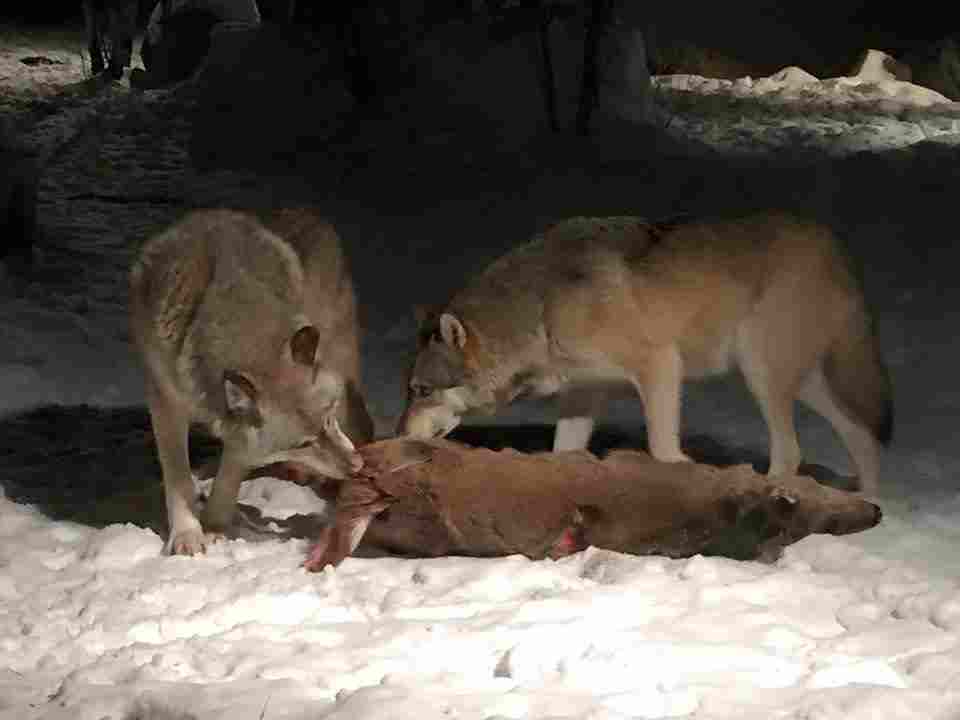
Being tertiary consumers, wolves play a crucial role in maintaining the balance of their ecosystem. By controlling the population of herbivores, they help regulate the abundance of plant-eating animals and prevent overgrazing. This, in turn, has a cascading effect on the entire food web.
Wolves are well-adapted for capturing and consuming their prey. Their sharp teeth and strong jaws allow them to efficiently hunt and feed on herbivores. While wolves may occasionally consume small amounts of plant matter, such as berries or grass, it is not a significant part of their diet. Their digestive system is specialized to extract nutrients from animal protein, making them highly efficient predators.
10. What Type of Consumer is a Red Wolf?
Red wolves, like other wolves, are classified as tertiary consumers in the food chain. As discussed earlier, tertiary consumers rely on other animals in lower trophic levels as their primary source of food. Red wolves primarily prey on herbivores such as rabbits, deer, and elk, which are considered primary consumers. They may also occasionally consume secondary consumers like raccoons and foxes.
Being tertiary consumers, red wolves play a vital role in maintaining the balance of their ecosystem. By controlling the population of herbivores and secondary consumers, they help regulate the abundance of plant-eating animals and prevent overgrazing. This, in turn, has a cascading effect on the entire food web.
Red wolves are well-adapted for hunting and consuming their prey. With their sharp teeth and strong jaws, they can efficiently capture and feed on herbivores and smaller secondary consumers.
11. What Secondary Consumers Do Wolves Eat?
Wolves are known to consume a variety of secondary consumers in their diet, including foxes, raccoons, and occasionally coyotes. However, it is important to note that wolves primarily rely on herbivores as their main source of food. Secondary consumers are not their preferred prey, and they are only consumed when there is a scarcity of their preferred food sources.
As discussed earlier, wolves are classified as tertiary consumers in the food chain. They primarily prey on herbivores such as rabbits, deer, and elk, which are considered primary consumers. These herbivores provide wolves with a more abundant and easily accessible source of food.
While wolves may occasionally consume secondary consumers like foxes, raccoons, and coyotes, it is not their primary dietary choice.
12. Are Wolves Secondary Consumers in the Food Chain?
Wolves are not typically considered secondary consumers in the food chain. As discussed earlier, secondary consumers are animals like coyotes, foxes, and raccoons. Wolves, on the other hand, primarily rely on herbivores as their main source of food, making them tertiary consumers.
In the food chain, wolves primarily prey on herbivores such as rabbits, deer, and elk, which are classified as primary consumers. These herbivores provide wolves with a more abundant and easily accessible source of food. While wolves may occasionally consume secondary consumers like coyotes, foxes, and raccoons, it is not their primary dietary choice.
By primarily targeting herbivores, wolves play a crucial role in regulating the population of these primary consumers. Their presence helps maintain a balance in the ecosystem by controlling the numbers of herbivores and preventing overgrazing.
13. Is a Wolf a Quaternary Consumer?
A wolf can be classified as a quaternary consumer in food chains with five trophic levels since they are apex predators. In these food chains, the wolf occupies the highest position and feeds on tertiary consumers, which are animals that consume secondary consumers.
As discussed earlier, wolves primarily rely on herbivores as their main source of food, making them tertiary consumers. However, in certain ecosystems where there are additional trophic levels, such as when there are other predators feeding on the primary and secondary consumers, the wolf can be considered a quaternary consumer.
By being an apex predator and occupying the top position in the food chain, wolves play a crucial role in maintaining the balance of the ecosystem. They help control the population of herbivores, which in turn prevents overgrazing and ensures the health of the ecosystem. Additionally, as quaternary consumers, wolves contribute to the flow of energy and nutrients within the food chain.
14. Is Wolf an Omnivore?
Wolves are primarily known as carnivores, and are not typically considered omnivores. Unlike animals such as bears, raccoons, coyotes, and foxes, which have a more varied diet that includes both plants and animals, wolves primarily rely on meat as their main source of food.
As discussed in earlier sections, wolves are classified as tertiary consumers in the food chain, meaning they primarily feed on herbivores. Their diet consists mainly of large ungulates such as deer, elk, and moose. They are highly skilled hunters and have adapted to be efficient predators, with sharp teeth and strong jaws for capturing and consuming their prey.
15. What Type of Animal is a Wolf?
A wolf is a large member of the Canidae biological family and one of the most dominant terrestrial wild carnivores in the northern hemisphere. It is known for its predatory characteristics and its role in the food chain as a high-level consumer.
As discussed in previous sections, wolves are classified as carnivores, meaning they primarily feed on meat. They are not typically considered omnivores like some other animals such as bears, raccoons, coyotes, and foxes, which have a more varied diet that includes both plants and animals. Wolves rely on meat as their main source of food.
In the food chain, wolves are classified as tertiary consumers. This means that they primarily feed on herbivores, which are the primary consumers. Their diet consists mainly of large ungulates such as deer, elk, and moose. Wolves are highly skilled hunters and have adapted to be efficient predators, with sharp teeth and strong jaws for capturing and consuming their prey.
16. Is Wolf an Example of Carnivore?
Yes, a wolf is indeed an example of a carnivore. As discussed in previous sections, wolves are classified as carnivores because they primarily feed on animal biomass, which includes flesh or meat. They are not omnivores like some other animals, such as bears or raccoons, that have a more varied diet consisting of both plants and animals. Wolves rely on meat as their main source of food, making them true carnivores in the animal kingdom.
In the food chain, wolves play the role of a tertiary consumer. This means that they primarily feed on herbivores, which are the primary consumers. Their diet mainly consists of large ungulates like deer, elk, and moose. Wolves are highly skilled hunters and have evolved to be efficient predators, equipped with sharp teeth and strong jaws for capturing and consuming their prey.
Considering their classification as carnivores and their position in the food chain as tertiary consumers, it is clear that wolves exemplify the characteristics of a true carnivore. Their dependence on animal flesh for sustenance and their role as top-level predators in their ecosystems make them a prime example of the carnivorous nature of certain species in the animal kingdom.
17. What Type of Consumer is a Wolf in the Food Chain?
In the food chain, a wolf is classified as a tertiary consumer. As discussed in previous sections, wolves occupy the third trophic level in the food chain. They primarily feed on herbivores, which are the primary consumers. Their diet consists of large ungulates like deer, elk, and moose. By consuming these herbivores, wolves obtain the energy and nutrients they need to survive and thrive.
Wolves play a crucial role in maintaining the balance of ecosystems as top-level predators. They help control the population of herbivores, preventing overgrazing and promoting the health of plant communities. This, in turn, has a cascading effect on the entire food chain, influencing the abundance and distribution of other species.
While some may argue that wolves can also be considered quaternary consumers due to their occasional consumption of fellow predators like foxes, their primary position in the food chain as tertiary consumers remains unchanged. Wolves primarily rely on herbivores for sustenance, making them an integral part of the trophic structure in their ecosystems.
18. What do Wolves Eat?
Wolves have a diverse diet that includes a variety of prey. They consume lower consumers such as small primary consumers like jackrabbits and large ones like deer and bison. Additionally, wolves occasionally feed on fellow predators like foxes. Their ability to adapt their diet to different prey species allows them to thrive in various ecosystems.
As discussed earlier, wolves are tertiary consumers in the food chain, primarily relying on herbivores for sustenance. By preying on these animals, wolves play a crucial role in regulating herbivore populations and maintaining the balance of ecosystems. Their predation helps prevent overgrazing and promotes the health of plant communities. Overall, the diet of wolves consists of a wide range of prey, making them versatile and adaptable predators in their respective habitats.
Conclusion
* In this article, we have explored various aspects of wolves and their role in the food chain.
* We have learned that wolves are tertiary consumers, primarily relying on herbivores for sustenance.
* Their diverse diet includes a range of prey, from small primary consumers to fellow predators.
* By preying on these animals, wolves help regulate herbivore populations and maintain ecosystem balance.
* Their adaptability and versatility make them successful predators in different habitats.
* Overall, wolves play a crucial role in promoting the health of plant communities and preventing overgrazing.
* We have also discussed the different types of consumers that wolves are in the food chain.
* Wolves can be classified as secondary consumers when they prey on primary consumers like rabbits.
* Additionally, they can be considered quaternary consumers when they feed on other predators like foxes.
* This highlights the flexibility of wolves in their feeding habits and their ability to occupy different trophic levels.
* Furthermore, we have examined the question of whether wolves are carnivores or herbivores.
* Wolves are indeed carnivores, as their diet primarily consists of meat.
* However, they can also consume plant material in certain situations, making them opportunistic omnivores.
* This adaptability allows wolves to survive in various environments and take advantage of available food sources.
* Lastly, we have explored the specific prey that wolves consume.
* Their diet includes a wide range of animals, from small mammals like rabbits to large ungulates like deer and bison.
* Wolves are skilled hunters and have the ability to take down prey much larger than themselves.
* This demonstrates their strength and cooperative hunting strategies, which contribute to their success as predators.
